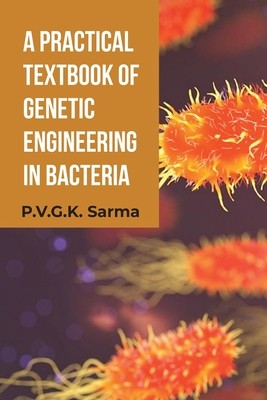
- We will send in 10–14 business days.
- Author: P V G K Sarma
- Publisher: MJP Publisher
- Year: 2021
- Pages: 168
- ISBN-10: 9388694414
- ISBN-13: 9789388694414
- Format: 15.2 x 22.9 x 0.9 cm, minkšti viršeliai
- Language: English
- SAVE -10% with code: EXTRA
A Practical Textbook of Genetic Engineering in Bacteria (e-book) (used book) | bookbook.eu
Reviews
Description
Genetic manipulation of bacteria is exploited largely in the laboratory because of their simple genetics and as they are easy to grow. These bacteria are predominantly important in producing large amounts of pure recombinant human proteins which can be used in medicine. The first example of this kind was shown in 1978 by Herbert Boyer working in a laboratory in University of California. He expressed human insulin gene in Escherichia coli. This product was approved by U.S. Food and Drug Administration for treating diabetes. The ease with which the bacteria could be manipulated has helped researchers in obtaining important molecules which otherwise are very difficult to purify from the organism in large amounts to be used in therapeutic purposes. The genetic sequences from a broad range of organisms can be easily ligated to a plasmid and transformed into bacteria for both storage and modification. Bacteria are simple to grow, divide quickly, easy to transform, and can be stored at -86 °C more or less indefinitely. The moment a gene is isolated it is very easy to store in bacteria and this provides limitless supply of active material for research. This has led to the development of huge number of recombinant plasmids for manipulating DNA/genes of different prokaryotic and eukaryotic organisms. CONTENTS: Chapter 1 - Cloning of DNA Fragments into Plasmid Vectors, Chapter 2 - Cloning of DNA fragments into Phage Vectors, Chapter 3 - Cloning in cosmid vectors, Chapter 4 - Techniques to understand the functionality of a gene, Glossary, Index.
EXTRA 10 % discount with code: EXTRA
The promotion ends in 23d.22:37:03
The discount code is valid when purchasing from 10 €. Discounts do not stack.
- Author: P V G K Sarma
- Publisher: MJP Publisher
- Year: 2021
- Pages: 168
- ISBN-10: 9388694414
- ISBN-13: 9789388694414
- Format: 15.2 x 22.9 x 0.9 cm, minkšti viršeliai
- Language: English English
Genetic manipulation of bacteria is exploited largely in the laboratory because of their simple genetics and as they are easy to grow. These bacteria are predominantly important in producing large amounts of pure recombinant human proteins which can be used in medicine. The first example of this kind was shown in 1978 by Herbert Boyer working in a laboratory in University of California. He expressed human insulin gene in Escherichia coli. This product was approved by U.S. Food and Drug Administration for treating diabetes. The ease with which the bacteria could be manipulated has helped researchers in obtaining important molecules which otherwise are very difficult to purify from the organism in large amounts to be used in therapeutic purposes. The genetic sequences from a broad range of organisms can be easily ligated to a plasmid and transformed into bacteria for both storage and modification. Bacteria are simple to grow, divide quickly, easy to transform, and can be stored at -86 °C more or less indefinitely. The moment a gene is isolated it is very easy to store in bacteria and this provides limitless supply of active material for research. This has led to the development of huge number of recombinant plasmids for manipulating DNA/genes of different prokaryotic and eukaryotic organisms. CONTENTS: Chapter 1 - Cloning of DNA Fragments into Plasmid Vectors, Chapter 2 - Cloning of DNA fragments into Phage Vectors, Chapter 3 - Cloning in cosmid vectors, Chapter 4 - Techniques to understand the functionality of a gene, Glossary, Index.


Reviews